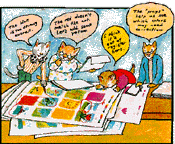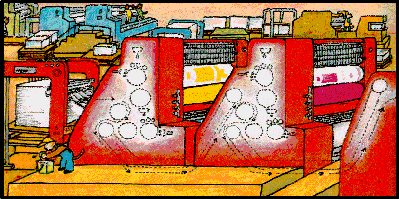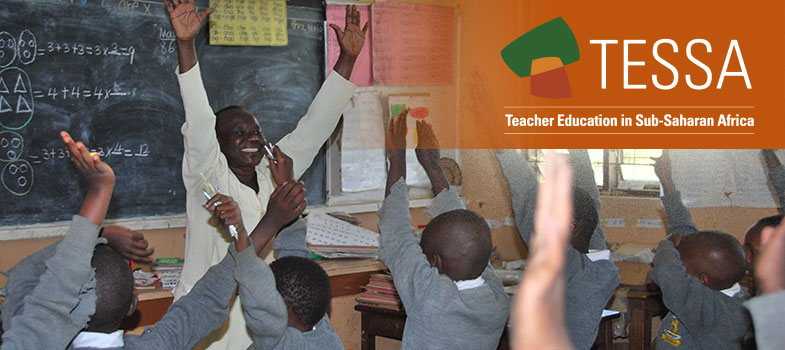Resource 1: How stories are made into books
![]() Background information / subject knowledge for teacher
Background information / subject knowledge for teacher
Making a book for your class alongside their normal reading and writing activities gives pupils an understanding of the importance of being able to read to access information and new stories. This process might encourage your pupils to want to read more by making a book for the class using their pictures and their own words as they become more competent writers.
Stage 1: Books begin with a great idea.
The author writes down a story. Probably, the author will write a few drafts of the story, trying to improve it each time. Authors often do research for their stories to make sure that they spell words right and get their facts straight. Sometimes it takes many weeks for the author to find the right way to tell the story. When the author is satisfied, she’ll type up or write her words into a manuscript, which she will send to her editor at the publishing house.
Stage 2: Editors are very busy people, and they have to read a LOT!
Manuscripts come in every day from authors all over the world. Editors have to sort through all of the manuscripts and decide which stories they think should be published. Editors love being able to tell authors that they want to publish the author’s story. And, of course, the author is thrilled! The editor also decides who should illustrate the manuscript. It’s very odd to think that for some books the author and illustrator never meet each other! Sometimes, the editor helps them communicate back and forth.
Stage 3: The artist's work begins.
Before an artist sits down to illustrate a story, she finds out the size the book is to be, and then she plans out the pages. She makes a ‘dummy’ book, with rough sketches, to show to her editor and the book designer. At this point, the editor might make some changes in the text of the story. Editors are good at helping writers find clearer ways of saying things.
Stage 4: The book designer gets involved.
The designer takes a look at the artist’s dummy book, and he makes suggestions for the art. He also finds the right typeface to use in the book. The style and size of the letters can make a big difference in how the book looks in the end. The designer can also help the artist decide how the words of the story will fit in with the art. Next, the story is sent to a copyeditor so that spelling, grammar, and punctuation can be checked. Then the author has another chance to change any part of the story.
Meanwhile…
Stage 5: The artist gets busy creating the finished artwork!
She uses her dummy book as a guide. The pages must be measured exactly so that she draws the art in the right place. She makes marks in the gutter where the pages will be sewn into the binding, and she marks the trim lines where the pages will be cut.
It’s not easy! She needs to create the art the way it will look in the printed book. It needs to be wonderful. Lines need to be straight, and there needs to be space for the words of the story.
When this is finished, she delivers the art to her editor at the publishing house.
There, the art is checked for mistakes, and the production director estimates how much it will cost to make the book. He determines the printing schedule for the book and orders paper.
Stage 6: The book goes into production!
The designer shows how the words and art will be placed. Then colour proofs are made, and everyone checks to make sure the printed colours match the colours of the artist’s illustrations. That is what everyone is looking at in this picture.

Once everyone is satisfied with how the art looks on the pages, final printing plates are made. The plates will be used on the printing press to print the pages.
Stage 7: Finally! It’s time to print the book!
After months of preparation, the printing takes only a day.
The thin plates (with impressions of the book on them) are wrapped around large cylinders that go in the printing press. Each cylinder prints one of the four colours of the book – first yellow, then blue, then red, then black. The other colours are made from combinations of these four colours.
Special grippers and conveyer belts help move the sheets of paper through the press. It’s VERY noisy in a printing plant!

Stage 8: Hooray! The moment everyone has been waiting for is here!
The book is printed, and it looks wonderful!
Did you know that all of the pages of a book are printed on one BIG sheet of paper? Half of the pages are printed on one side of the press sheet and the other half are printed on the opposite side. After these sheets are printed, they are folded, cut and then bound into a book.
Stage 9: The new books are distributed!
Bound books are taken to the book warehouse, where they stay until they are sold to libraries and bookshops.
How do librarians and booksellers know that a great new book has been published? Other people at the publishing house sell and publicise the book. Sometimes posters and special displays are made. Publicists send out review copies of the book to people in the media. Authors often are interviewed by reporters in the newspaper and on TV.
Lots of people work hard to make sure that one day…
Stage 10: …you read the book!
All of the people you’ve met are thinking about you and whether or not you will like the book. The author and artist think about you when they create the story and illustrations. The editor and designer think about you, too, when they put the book together. And YOU are the reason the big noisy printing press prints the books for you to read.
Happy reading!
Taken from: How a book is made – http://www.harperchildrens.com
Other websites on this topic include http://library.thinkquest.org and http://www.factmonster.com
3. Working in groups on book design



